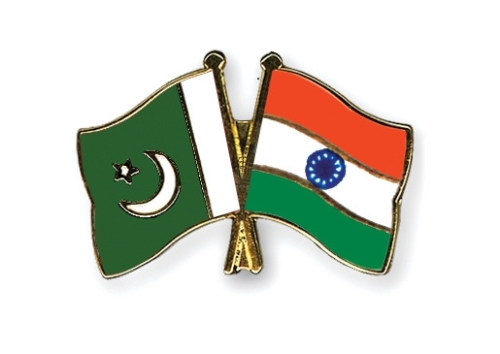
This article was originally published by openDemocracy on 10 January 2015.
International constraint and mutual nuclear deterrence may have prevented all-out war with Pakistan in the past over contested Kashmir. With thousands fleeing their homes amid escalating violence, that may not remain a secure wager.
Rising tension at the Line of Control (LoC) between India and Pakistan is putting in question the widely-held assumption that their conflict will not escalate to an all-out conventional or even nuclear war. International concern has extended to the US, previously resistant to mediating in the Kashmir dispute.
This is at the heart of the existential rivalry between the two states. Kashmir has become so symbolically significant to both India and Pakistan that they are beset by zero-sum thinking, though a resolution would potentially put an end to their hostilities. In the current context that seems unlikely.
At the brink
Past military crises between India and Pakistan remained at the brink of all-out war because of international pressure and, most importantly, the deterrent value of nuclear weapons. Rationally, since India is conventionally stronger than Pakistan, the latter would not think of escalating the crisis; and since India is a democracy, it would act out the associated values, engaging Pakistan in peaceful dialogue.
But the growing tensions are crowding out rational argument. A primordialist view of the conflict, tracing back to 1947, is exacerbated by media posturing on both sides. This blame game mobilises public opinion in alignment with the nationalist notions of the two states.
The proliferation of nuclear weapons has on the face of it given more strength to Pakistan to flex its muscles, including engaging in sub-conventional warfare with India. And for all its democratic self-image India lacks any open and goal-oriented strategy—seeing in its absence security lapses, intelligence failures, an inability to prevent terror attacks and a disconnect between civilian and military leadership.
Indian security agencies are unable to join the dots at the right time to prevent infiltrations and attacks–repeatedly in the Samba region of Jammu at the LoC and in four synchronised episodes in Kashmir during the recent assembly elections—despite joint mechanisms. While India and Pakistan can join hands in preventing such attacks, a cause of serious concern for both, the escape route for the former in the event of failure is to blame everything on the latter, increasing the trust deficit between the two.
In default of a strategy, India tries to curb resistance in Kashmir by sending in more soldiers and paramilitary troops, in counter-insurgency operations for which they are not trained—as even the forces involved acknowledge—and in which they thus cannot be expected to behave in a professional manner. A post-colonial mindset, of dealing with ‘enemies’ by hook or by crook, is applied. This has inevitably heightened alienation in the Kashmir Valley, spiralling via further human-rights violations.
Pakistan’s internal condition is meanwhile deteriorating. Tehrik-i-Taliban (TTP) has created mayhem by stoking sectarian violence in various regions. Even if the Pakistan army has infiltrated the Taliban ranks, this has not led to a cessation of hostilities. This chaotic context only adds further volatility to rising tension at the LoC.
And the posture of India seems more aggressive now, under the Hindu-nationalist Bharatiya Janata Party (BJP) and the wider National Democratic Alliance coalition it leads—they having consistently criticised the former centre-left, United Progressive Alliance government as ‘soft’ on Pakistan. Though the prime minister, Narendra Modi, initially showed a willingness to engage, India immediately called off talks between foreign ministers when the Pakistan high commissioner met the hardline Kashmiri separatist Syed Ali Shah Geelani ahead of them. After an hiatus caused by the worst floods to hit Kashmir in years, ever since there has been escalation from both sides.
Fault-lines
The occupation continues, regardless of governmental change, because all the political parties in New Delhi share the sentiment that Jammu and Kashmir is an integral part of India. The elections in the state however showed a clear polarisation along ethno-religious fault-lines: the regional parties (the National Conference and People’s Democratic Party) predominated in the autonomist Kashmir Valley but the BJP made almost a clean sweep of the more integrationist Jammu, while Congress did likewise in the relatively depopulated Ladakh.
With the parties unable to form a new administration, governor’s rule was imposed on 9 January. The BJP has succeeded in dividing the Muslims who predominate in the Kashmir Valley while uniting the Hindus in Hindu-majority Jammu. This has made the partition of the state into the three areas almost palpable.
Such a scenario could only lead to further radicalisation of the valley youth, with every possibility of India and Kashmir being thrown back to the violent 1990s. Amid US withdrawal from Afghanistan and Pakistan’s domestic deterioration, any complacency as to reason prevailing would be misplaced.
Bear in mind that the BJP manifesto pledged the abrogation of article 370 of the Indian constitution, which ascribes special status to Jammu and Kashmir—the only saving grace by which India can assert the legitimacy of its continuing rule.
Haifa Peerzada is a lawyer and holds a masters in International Relations and Security from the University of Birmingham. She currently practices law at the High Court of Jammu and Kashmir, India and is also a visiting lecturer of peace and conflict studies at IUST, India.
This article is published under a Creative Commons Attribution-NonCommercial 3.0 licence.
For more information on issues and events that shape our world, please visit ISN Security Watch or browse our resources.

